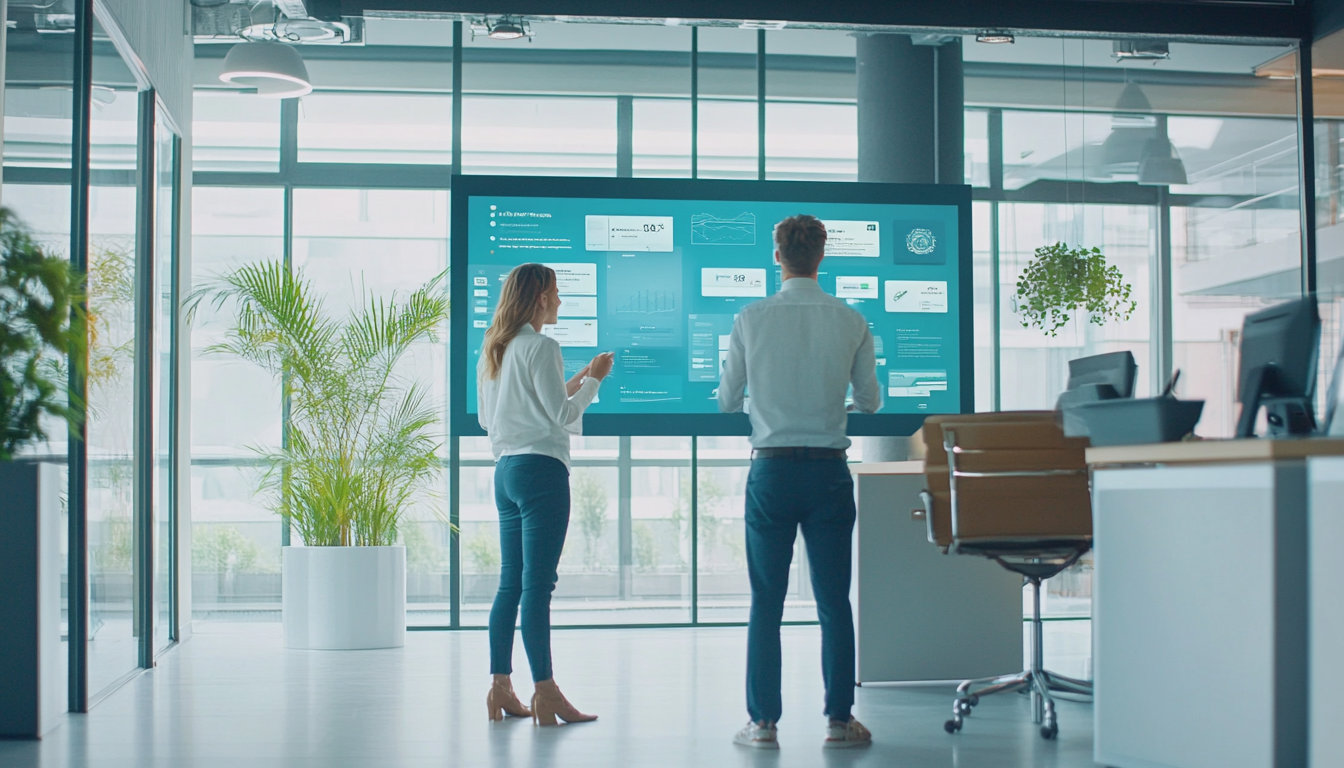A well-designed property maintenance program is crucial for maintaining buildings, infrastructure, and surrounding areas in top condition. It involves a broad spectrum of activities, including routine inspections, repairs, and preventive actions. By adopting a comprehensive maintenance strategy, property managers can guarantee the safety, efficiency, and functionality of their assets. This approach also ensures a pleasant environment for tenants and visitors.
Property maintenance programs are vital in various sectors, including real estate, hospitality, and facility management. These programs cover a wide range of tasks, from routine cleaning and landscaping to HVAC maintenance and safety inspections. By addressing maintenance needs proactively, property managers can avoid expensive repairs, prolong the life of their assets, and uphold a positive reputation among tenants and clients.
Effective property maintenance requires a blend of scheduled and preventive maintenance strategies. Scheduled maintenance involves regular, time-based tasks to maintain the property’s condition. Preventive maintenance, on the other hand, focuses on identifying and resolving potential issues before they become major problems. By balancing these two strategies, property managers can optimize their resources and ensure the long-term success of their maintenance program.
Key Takeaways
- Property maintenance programs are essential for ensuring the safety, efficiency, and functionality of buildings and infrastructure
- Maintenance tasks vary across industries, including real estate, hospitality, and facility management
- Effective maintenance programs combine scheduled and preventive maintenance strategies
- Proactive maintenance can prevent costly repairs and extend the lifespan of assets
- A well-designed maintenance program contributes to tenant satisfaction and a positive reputation for the property
What is a property maintenance program?
A property maintenance program is a detailed plan to keep buildings and land in top shape. It ensures the property’s functionality, safety, and looks are maintained. This is crucial for the comfort of those living there and the property’s value. It includes routine upkeep, preventive actions, repairs, and cosmetic improvements.
- Scheduled maintenance: Regular tasks like mowing and cleaning are done at set times to keep the property looking good and working well.
- Preventive maintenance: Checking and servicing important systems like HVAC and plumbing helps catch problems early, avoiding expensive fixes later.
- Corrective maintenance: Quick fixes for emergencies, like fixing broken structures or equipment, minimize disruption and prevent further damage.
- Cosmetic maintenance: Improvements like painting and landscaping enhance the property’s look, keeping its value high.
- Compliance and safety checks: Regular inspections and following laws ensure the property is safe and meets building codes.
Such programs are essential for various properties:
- Commercial real estate
- Apartments
- Homes
- Hotels and resorts
- Condominiums
- Storage facilities
Implementing a thorough maintenance program helps property managers:
| Benefit | Description |
|---|---|
| Restore functionality | Fixes or repairs the rental property |
| Prevent breakdowns | Preventive maintenance avoids expensive repairs |
| Retain or increase property value | Keeps the property looking good and appealing |
| Ensure occupant comfort and safety | Creates a clean, functional, and secure space for tenants and visitors |
In summary, a property maintenance program is crucial for property management. It involves a systematic approach to upkeep, repair, and enhancement. By having a well-planned program, managers can improve their properties’ performance and value. This ensures the satisfaction and well-being of those living there.
Benefits of implementing a property maintenance program
Implementing a comprehensive property maintenance program offers numerous benefits. It helps protect the value of investments over time. Regular maintenance prevents small issues from becoming major problems, extending the life of building components and systems.
A well-executed maintenance program boosts tenant satisfaction. When tenants live or work in a well-maintained environment, they are more likely to stay and recommend the property. This leads to higher occupancy rates, reduced turnover costs, and a stable income for property owners.
Ensuring safety compliance is a key aspect of property maintenance. Following building codes, fire safety regulations, and health standards reduces the risk of accidents and legal liabilities. Regular inspections and proactive maintenance identify and address hazards, making the environment safer for everyone.
The benefits of a property maintenance program are widespread. They apply to various sectors, including:
- Retail: Well-maintained shopping centers attract customers and improve the shopping experience.
- Residential: Properly maintained apartment complexes foster a sense of community and increase resident satisfaction.
- Hospitality: Hotels and resorts with a focus on maintenance offer guests a comfortable and safe stay, leading to positive reviews and repeat business.
- Manufacturing: Regular maintenance of production equipment and facilities ensures optimal functionality, minimizes downtime, and supports a safe working environment.
The financial benefits of a property maintenance program are significant. While employing an in-house maintenance team may seem expensive, it’s often more cost-effective than contracted services. In-house teams know the property’s specific needs and can respond quickly to maintenance requests, minimizing downtime and preventing issues from escalating.
In conclusion, a property maintenance program is a strategic investment. It preserves asset value, enhances tenant satisfaction, ensures safety compliance, and optimizes operational efficiency. A well-planned maintenance approach is crucial for the long-term success of any property.
Types of maintenance in a property maintenance program
A comprehensive property maintenance program includes several types of maintenance. These ensure the longevity and optimal performance of the property. The types are time-based maintenance, usage-based maintenance, predictive maintenance, and corrective maintenance. Each type is crucial for maintaining the property’s condition and value.
Time-based maintenance, or scheduled maintenance, is done at regular intervals, regardless of the equipment’s condition. It includes activities like cleaning, lubrication, and inspections. For example, a property manager might schedule annual HVAC system inspections or quarterly gutter cleaning to prevent issues.
Usage-based maintenance, or meter-based maintenance, is triggered by equipment reaching a specific usage threshold. This could be operating hours or miles driven. It ensures maintenance is performed when needed, based on actual wear and tear. For instance, maintenance for a backup generator might be scheduled after it has run for a certain number of hours.
Predictive maintenance uses advanced technology and data analysis to monitor equipment performance. It predicts when maintenance will be required. This proactive approach helps identify potential issues before they cause equipment failure or downtime. By using sensors, digital twins, and machine learning algorithms, property managers can optimize maintenance schedules and reduce costs associated with unexpected breakdowns.
Corrective maintenance, or reactive maintenance, is performed when equipment fails or breaks down unexpectedly. It is essential for addressing urgent issues and minimizing disruptions to tenants or occupants. While it is unavoidable, a well-designed property maintenance program aims to minimize its occurrence through preventive and predictive maintenance strategies.
| Maintenance Type | Description | Examples |
|---|---|---|
| Time-based maintenance | Performed at regular intervals regardless of equipment condition | Annual HVAC inspections, quarterly gutter cleaning |
| Usage-based maintenance | Triggered when equipment reaches a specific usage threshold | Backup generator maintenance after running for a certain number of hours |
| Predictive maintenance | Utilizes advanced technology and data analysis to predict maintenance needs | Using sensors, digital twins, and machine learning algorithms to optimize maintenance schedules |
| Corrective maintenance | Performed when equipment fails or breaks down unexpectedly | Addressing urgent issues and minimizing disruptions to tenants or occupants |
By incorporating these various types of maintenance into a property maintenance program, property managers can effectively maintain the condition and value of their properties. This approach minimizes costs and disruptions. A well-balanced program that combines time-based, usage-based, predictive, and corrective maintenance ensures the property remains in optimal condition. It continues to meet the needs of its occupants.
Developing a comprehensive property maintenance program
Creating a detailed property maintenance program is key to keeping your real estate assets in top shape. A proactive maintenance approach can save you time, money, and effort over the long haul. The first move is to conduct a thorough asset inventory. This means listing and documenting every part of your property, from building systems to fixtures.
After you’ve got your asset list, it’s time for maintenance prioritization. You need to figure out which assets are most critical. This depends on their impact on tenant comfort and safety, their failure risk, and the cost of fixing or replacing them. Prioritizing maintenance helps you use your resources wisely and tackle urgent issues first.
Setting the right maintenance intervals is also vital. You’ll need to look at the manufacturer’s guidelines, industry norms, and past performance data. This helps you find the best times for checks, repairs, and replacements. Regular maintenance prevents sudden failures and keeps your assets running longer.
Lastly, scheduling recurring tasks is crucial for consistent and efficient maintenance. You can use software or a detailed calendar to plan out daily, weekly, monthly, and yearly tasks. Some common tasks include:
- HVAC system inspections and filter changes
- Plumbing and electrical system checks
- Fire safety equipment testing
- Roof and gutter cleaning
- Landscaping and pest control
By building a comprehensive maintenance program, you can ensure your real estate investments thrive. Regular upkeep prevents expensive repairs, keeps tenants happy, and boosts your property’s value. This leads to a more profitable and sustainable portfolio.
Scheduled maintenance: The backbone of your property maintenance program
Scheduled maintenance is the cornerstone of a thriving property maintenance program. It involves proactive planning and execution of regular maintenance tasks to maintain your properties in peak condition. A well-structured scheduled maintenance plan prevents breakdowns, extends asset lifespan, and ensures a safe, appealing environment for all.
Effective maintenance planning is key to your program’s success. It requires identifying crucial maintenance tasks, setting their frequency, and allocating necessary resources. A comprehensive work order system is vital for managing and tracking these tasks, ensuring nothing is overlooked.
- Cleaning gutters and downspouts
- Landscaping and grounds maintenance
- Painting and surface treatments
- HVAC system servicing and filter replacements
- Replacing smoke detectors and carbon monoxide detectors
By prioritizing these tasks and performing them regularly, you can significantly reduce the risk of unexpected breakdowns. This maintains high property performance. Consider these statistics on the importance of scheduled maintenance:
| Statistic | Impact |
|---|---|
| Scheduled maintenance can reduce maintenance costs by up to 15% | Lower operating expenses and improved budget management |
| Regular inspections can help decrease maintenance costs by 25% | Early detection and prevention of potential issues |
| Implementation of maintenance scheduling software can increase productivity by 25% | Streamlined processes and enhanced efficiency |
Investing in a robust scheduled maintenance program optimizes your maintenance budget and enhances property value. By diligently addressing essential maintenance tasks, your properties remain in excellent condition. This attracts and retains tenants, while minimizing the risk of costly repairs and downtime.
Preventive maintenance: Proactive approach to property upkeep
Preventive maintenance is a proactive strategy that focuses on regularly scheduled maintenance tasks to prevent equipment failure and minimize unplanned downtime. By implementing a preventive maintenance plan, property managers can extend the life of their assets, improve overall equipment reliability, and reduce long-term costs associated with repairs and replacements.
One key aspect of preventive maintenance is conducting regular equipment inspections. These inspections help identify potential issues before they escalate into major problems, allowing for timely intervention and parts replacement as needed. For example, quarterly HVAC servicing can prevent system breakdowns during peak usage periods, ensuring tenant comfort and avoiding costly emergency repairs.
Preventive maintenance tasks can be scheduled based on time, usage, or risk management factors. Time-based tasks, such as winterizing pipes or cleaning gutters, are often performed seasonally or quarterly. Usage-based maintenance involves checking and maintaining equipment based on the number of hours it has been used, while risk management maintenance focuses on frequent inspections of critical assets like access control systems, roofs, and electrical systems to prevent failures.
Implementing a preventive maintenance plan offers numerous benefits, including:
- Reducing downtime and equipment failure
- Extending the lifespan of assets
- Minimizing overtime costs for emergency repairs
- Improving safety by identifying and addressing potential hazards
- Lowering utility costs through optimized equipment performance
The following table illustrates the potential cost savings achieved by implementing a preventive maintenance plan:
| Maintenance Strategy | Annual Maintenance Cost | Annual Repair Cost | Total Annual Cost |
|---|---|---|---|
| Reactive Maintenance | €50,000 | €150,000 | €200,000 |
| Preventive Maintenance | €80,000 | €40,000 | €120,000 |
| Annual Cost Savings | €80,000 |
While the initial costs of transitioning to a preventive maintenance plan may be a deterrent, the long-term benefits far outweigh the upfront investment. By proactively maintaining equipment and facilities, property managers can significantly reduce the risk of safety incidents, minimize equipment deterioration, and ultimately save money on costly repairs and replacements.
The role of technology in property maintenance programs
Technology has transformed the property management industry, changing daily operations and decision-making. It has also improved interactions with tenants. By using advanced tools, property managers can make their maintenance programs more efficient. This leads to better service for tenants.
Maintenance management software is a key innovation for property maintenance. It simplifies planning, scheduling, and tracking maintenance tasks. This software automates tasks like work order generation and inventory management. It helps managers save time, cut costs, and make informed decisions.
Smart sensors and IoT devices are crucial in property maintenance. They monitor equipment performance in real-time. This allows for predictive maintenance and early problem detection. By addressing issues early, managers can reduce downtime and extend asset life, saving on repair costs.
Asset tracking solutions are vital for modern property maintenance. They ensure accurate inventory records, meeting regulatory requirements and improving resource allocation. With these tools, managers can optimize maintenance schedules, reduce waste, and enhance operational efficiency.
| Technology | Benefits |
|---|---|
| Maintenance management software | Streamlines planning, scheduling, and tracking of maintenance tasks; automates work order generation and inventory management; provides valuable insights through data analysis |
| Smart sensors and IoT devices | Enables real-time monitoring of equipment performance; allows for predictive maintenance and early detection of potential issues; minimizes downtime and extends asset lifespan |
| Asset tracking solutions | Helps maintain accurate inventory records; ensures compliance with regulations; facilitates efficient resource allocation; optimizes maintenance schedules and reduces waste |
By embracing these technologies, property managers can revolutionize their maintenance programs. This makes them more efficient, cost-effective, and data-driven. As the industry evolves, those who adopt these tools will thrive in a competitive market.
Best practices for successful property maintenance program implementation
Implementing a successful property maintenance program requires adherence to best practices. Assembling a skilled and well-trained maintenance team is crucial for ensuring the smooth execution of maintenance tasks. Whether you choose to have an in-house team or work with third-party providers, it is essential to invest in their training and development. This keeps them updated with the latest industry standards and technologies.
Clear communication channels between maintenance staff, property managers, and occupants are vital for the success of your maintenance program. Establishing open lines of communication helps in promptly addressing maintenance issues. This reduces response times and enhances tenant satisfaction. Regular meetings, updates, and feedback sessions can help keep everyone on the same page and foster a collaborative environment.
Accurate documentation is another critical aspect of a successful maintenance program. Maintaining detailed records of maintenance activities, asset histories, and compliance requirements helps in tracking the performance of your maintenance team. It also identifies areas for improvement. Proper documentation ensures that you have the necessary information readily available for audits, inspections, and decision-making processes.
| Best Practice | Benefits |
|---|---|
| Skilled maintenance team | Ensures smooth execution of maintenance tasks |
| Clear communication | Promptly addresses issues and enhances tenant satisfaction |
| Accurate documentation | Tracks performance and ensures compliance |
| Continuous improvement | Optimizes maintenance schedules and aligns with changing needs |
Continuously monitoring and analyzing maintenance data is essential for identifying areas for improvement and optimizing your maintenance schedules. By regularly reviewing key performance indicators (KPIs) such as response times, completion rates, and tenant satisfaction scores, you can make data-driven decisions. This enhances the effectiveness of your maintenance program.
Finally, it is crucial to regularly review and update your maintenance program to ensure it aligns with changing property needs and industry best practices. Staying informed about the latest trends, technologies, and regulations in property maintenance can help you stay ahead of the curve. This ensures you provide the best possible service to your tenants and property owners.
- Invest in training and development of your maintenance team
- Establish clear communication channels between all stakeholders
- Maintain accurate documentation of maintenance activities and asset histories
- Continuously monitor and analyze maintenance data for improvement opportunities
- Regularly review and update your maintenance program to align with industry best practices
Conclusion
Implementing a comprehensive property maintenance program is vital for the longevity and value of real estate. A proactive maintenance approach, through scheduled and preventive measures, helps mitigate issues. It extends asset lifespan and creates appealing environments for tenants and visitors.
Adopting maintenance best practices, like regular inspections and prompt repairs, significantly boosts property appeal and functionality. Collaborating with professional landscaping services is also key. This approach enhances the overall appeal and functionality of a property.
Investing in a well-designed maintenance program offers substantial benefits. It preserves assets, boosts tenant satisfaction, and saves costs in the long run. Regular tasks, such as HVAC servicing and energy-efficient upgrades, prevent costly breakdowns. They also reduce energy consumption and utility bills.
By focusing on upkeep, property owners can increase rental prices and minimize turnover. This ensures consistent revenue streams. Regular maintenance tasks contribute to reduced energy consumption and lower utility bills.
As the modern workforce’s needs evolve, property owners must adapt. Incorporating advanced technology, collaborative spaces, and environmental responsibility can enhance property value. Leveraging technology and partnering with experienced maintenance teams streamlines processes. It reduces redundancies and ensures high-quality maintenance services.
In conclusion, a well-executed property maintenance program is crucial for successful real estate management. Embracing proactive maintenance strategies and adhering to best practices is essential. Staying adaptable to tenant needs maximizes asset value, enhances satisfaction, and secures a competitive edge in the market.
FAQ
What is a property maintenance program?
A property maintenance program involves inspecting, repairing, and maintaining properties. It covers a wide range of tasks to ensure buildings and infrastructure are safe and functional. It also includes upkeep of exterior spaces.
What are the benefits of implementing a property maintenance program?
Implementing a program preserves property value, safety, and appeal. It creates safe environments, keeps tenants happy, and ensures assets function optimally. This also ensures compliance with safety standards.
What types of maintenance are included in a property maintenance program?
A program includes time-based, meter-based, predictive, and corrective maintenance. Time-based maintenance is scheduled, while meter-based is based on usage. Predictive maintenance uses data analysis, and corrective maintenance addresses urgent needs.
How do you develop a comprehensive property maintenance program?
To develop a program, start by inventorying assets. Then, prioritize tasks based on risk and criticality. Determine maintenance intervals and schedule tasks. Use metrics to monitor and improve the schedule.
What is the role of scheduled maintenance in a property maintenance program?
Scheduled maintenance is crucial. It involves regular tasks to maintain properties. Effective maintenance prevents breakdowns, extends asset life, and ensures a safe environment.
What is preventive maintenance, and how does it benefit property maintenance?
Preventive maintenance prevents equipment failure and reduces downtime. It involves regular inspections and servicing. This approach saves costs by avoiding expensive repairs and extending asset life.
How does technology support property maintenance programs?
Technology is key in property maintenance. Maintenance software streamlines task planning and tracking. Smart sensors and IoT devices enable real-time monitoring. Asset tracking ensures inventory accuracy and compliance.
What are the best practices for successful property maintenance program implementation?
Success requires a skilled maintenance team, clear communication, and accurate documentation. Continuous data analysis and regular program updates are also crucial. This ensures the program meets changing needs and industry standards.
How can property maintenance programs benefit facility management?
Maintenance programs are vital for facility management. They ensure safety, efficiency, and functionality. Comprehensive planning and scheduling help optimize property performance and extend asset life.
What is the importance of property condition assessments in maintenance programs?
Property condition assessments are crucial. They evaluate a property’s state and identify maintenance needs. These assessments help prioritize tasks, allocate resources, and develop strategies. Regular assessments keep maintenance programs aligned with property needs.







